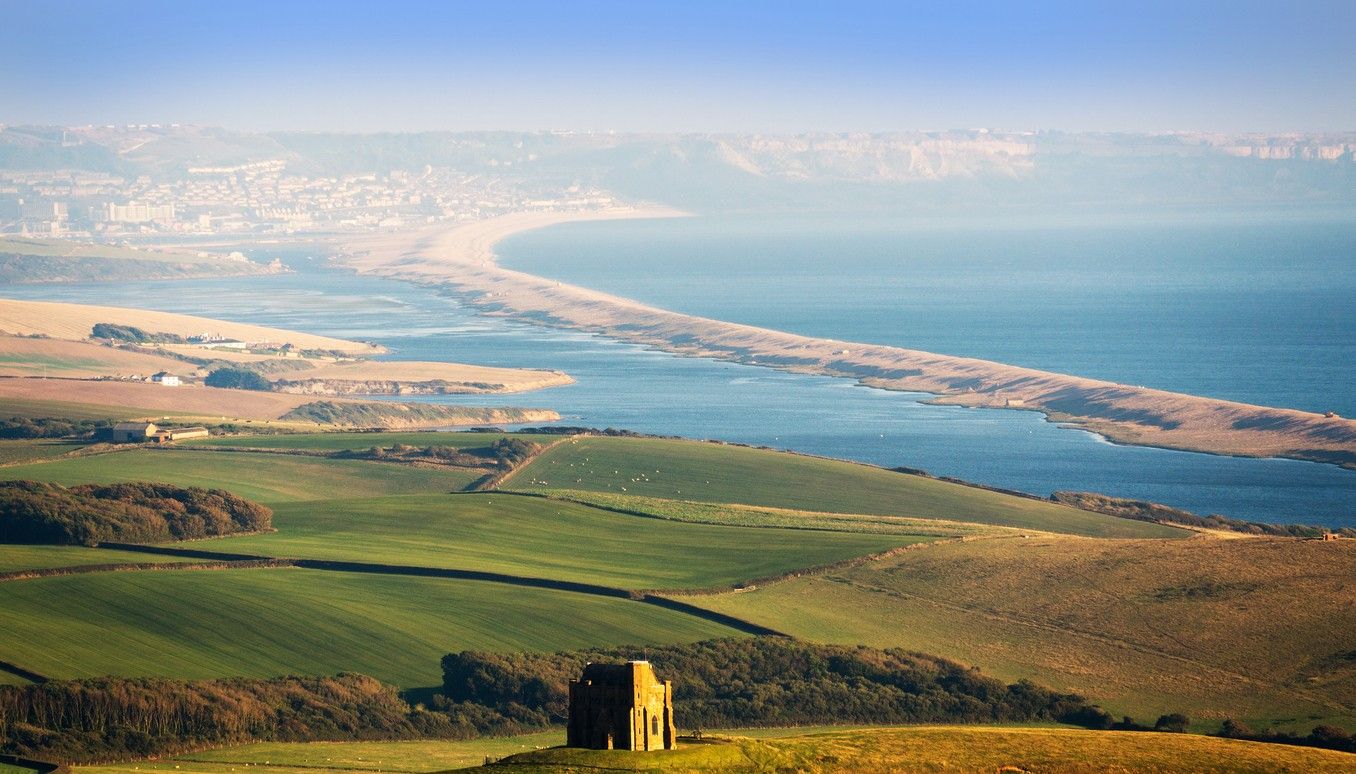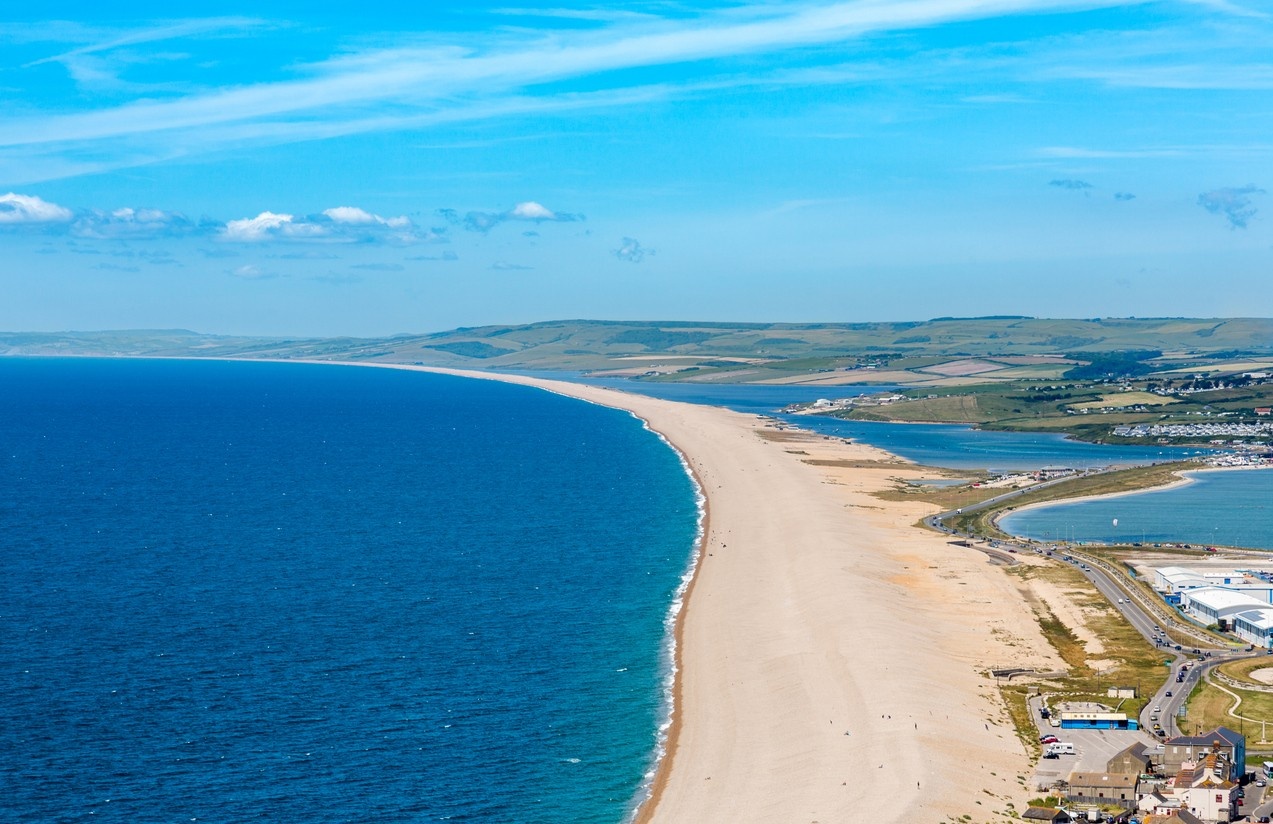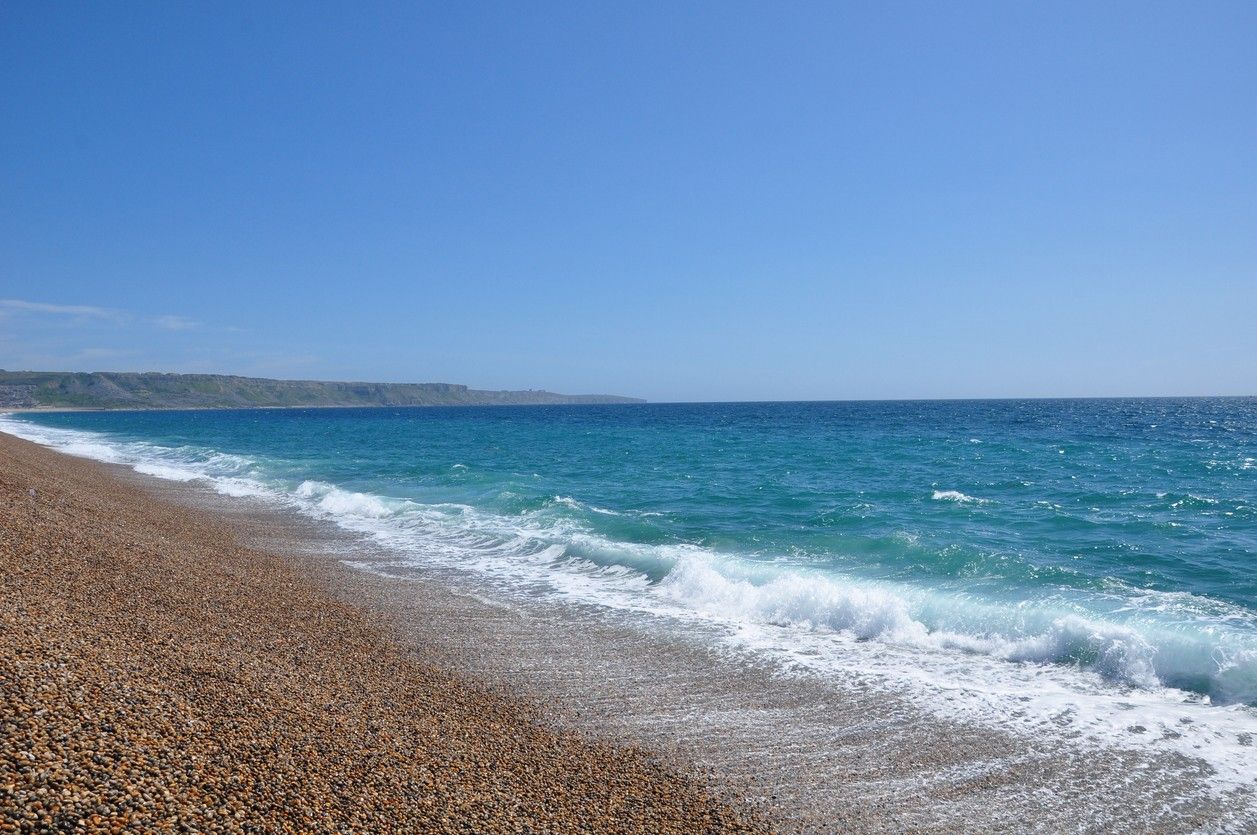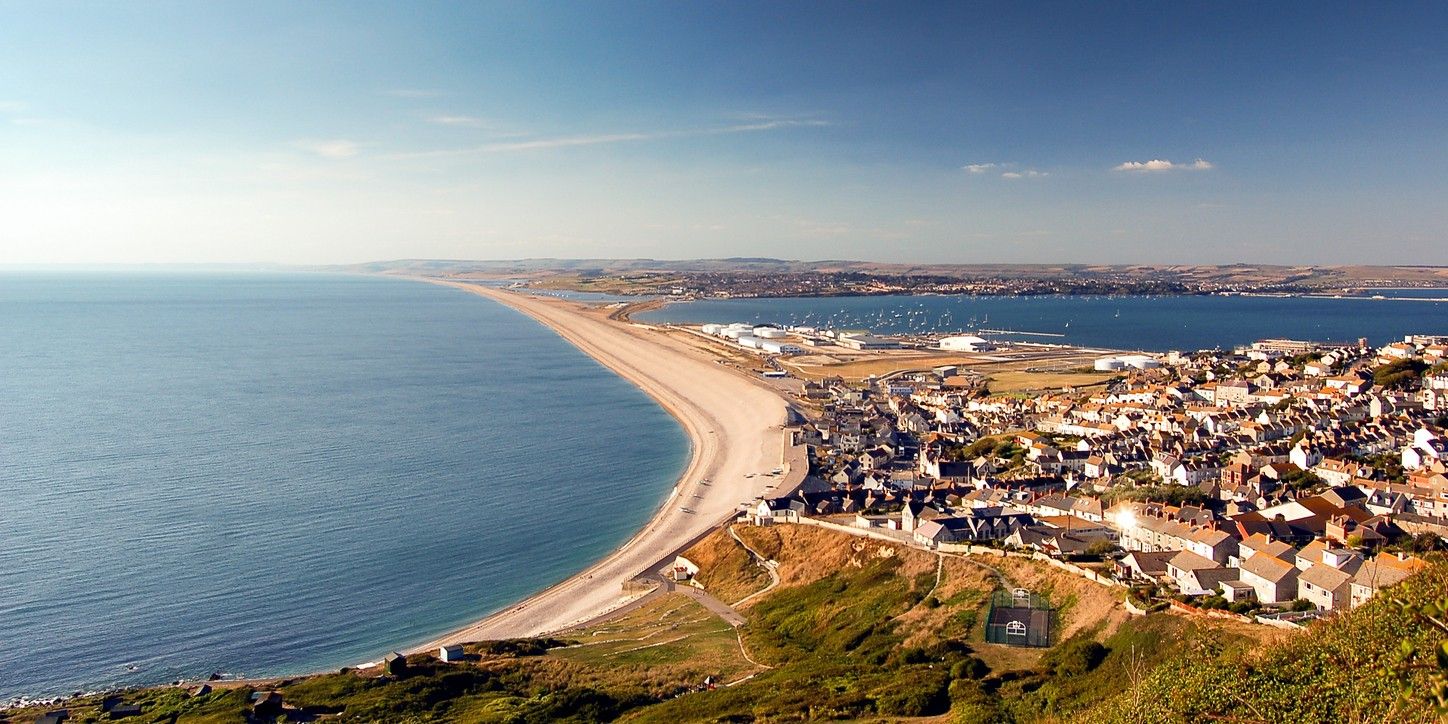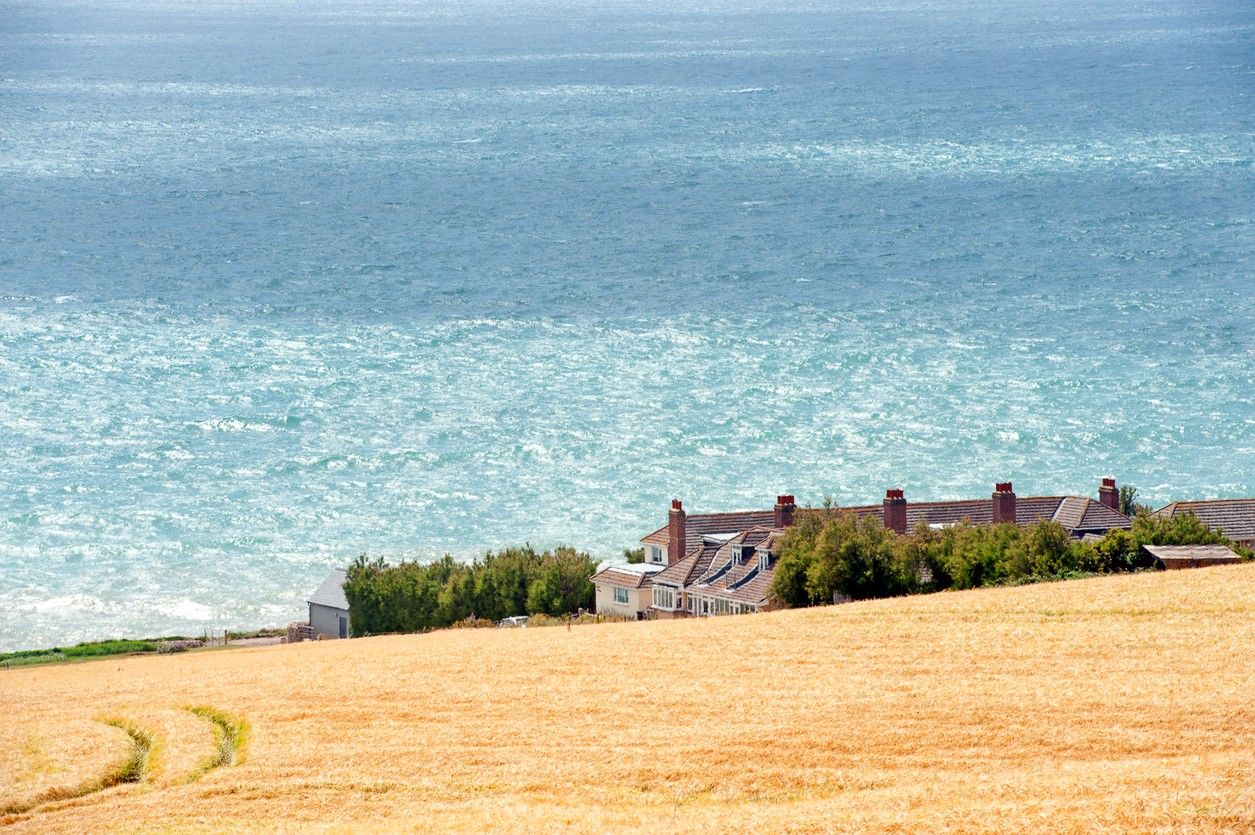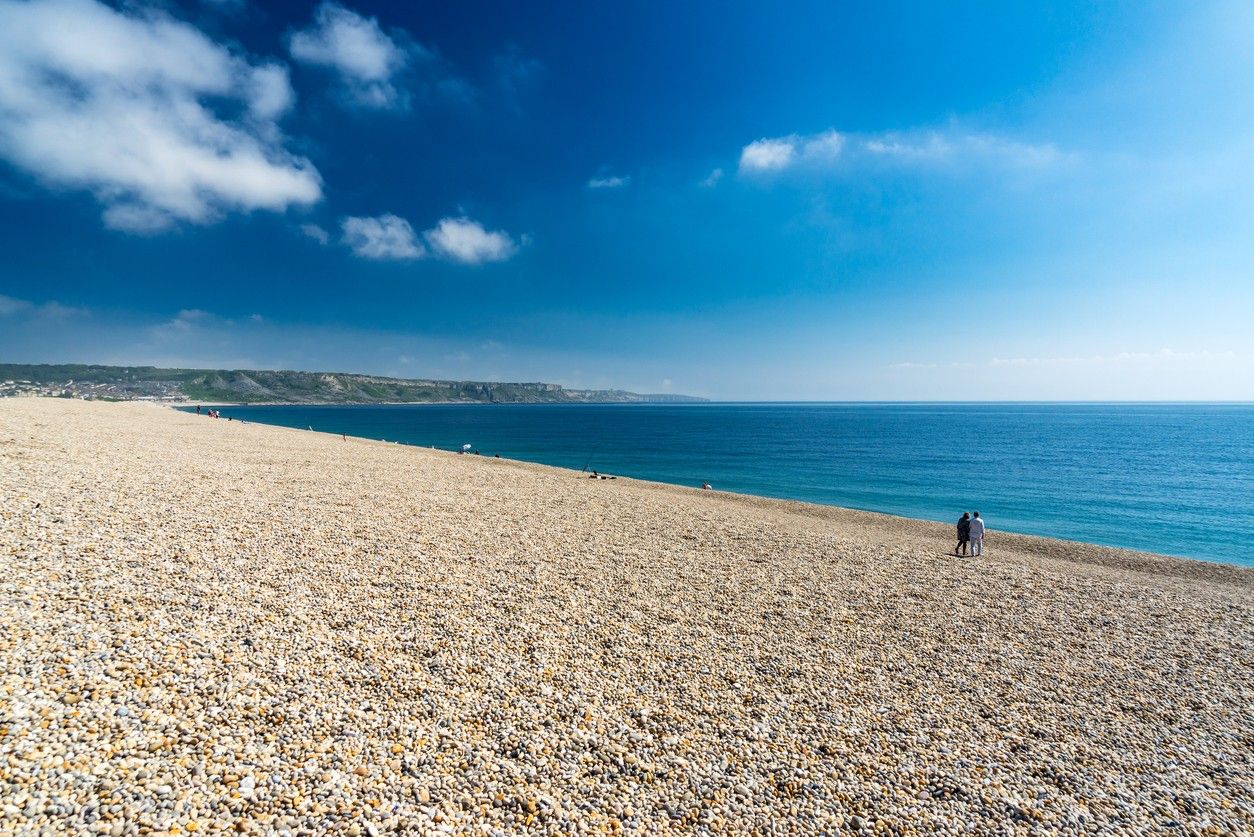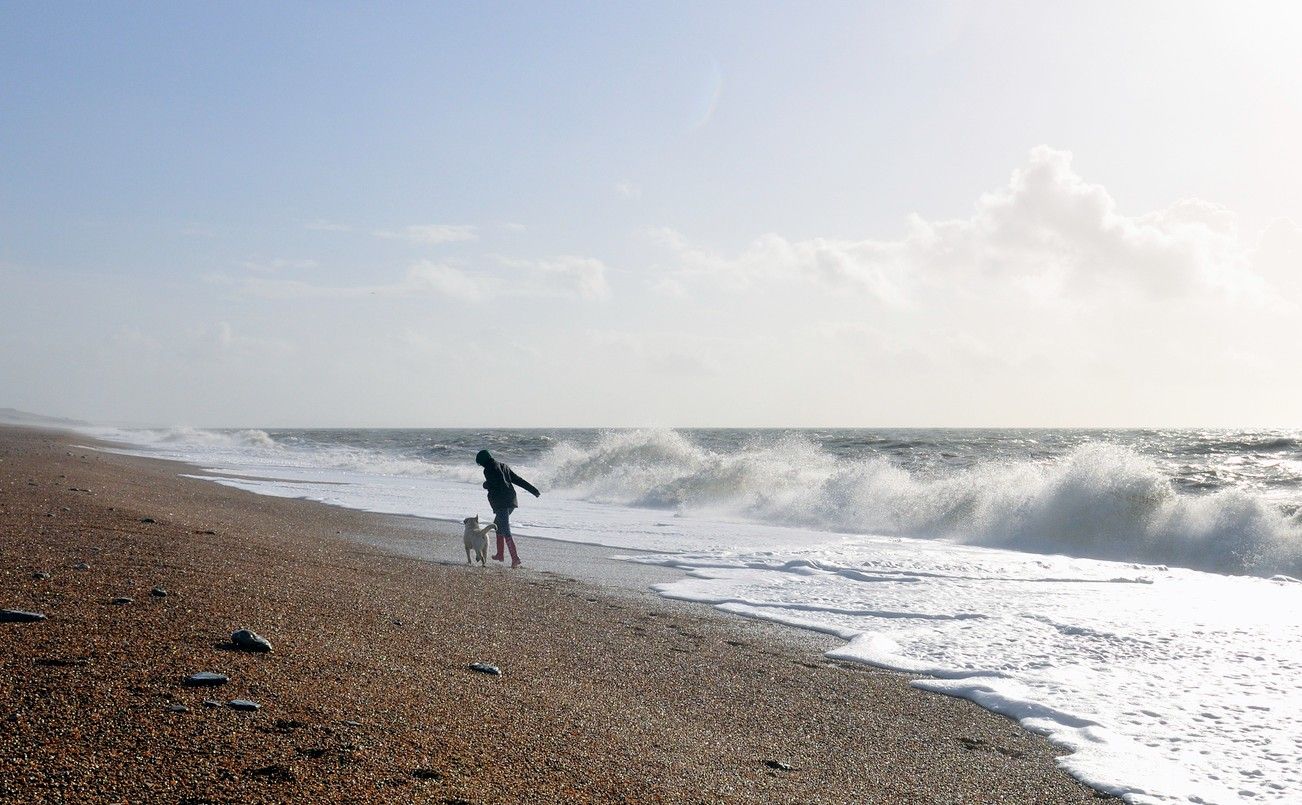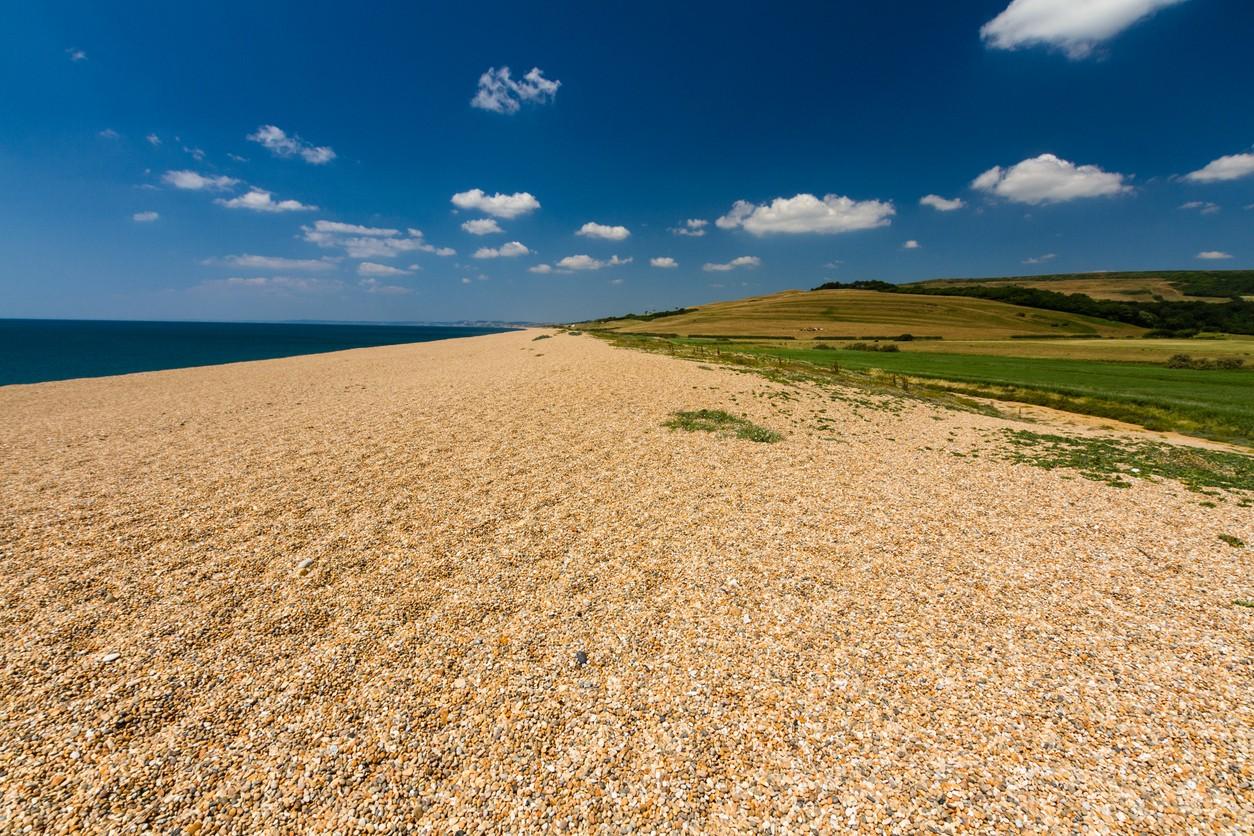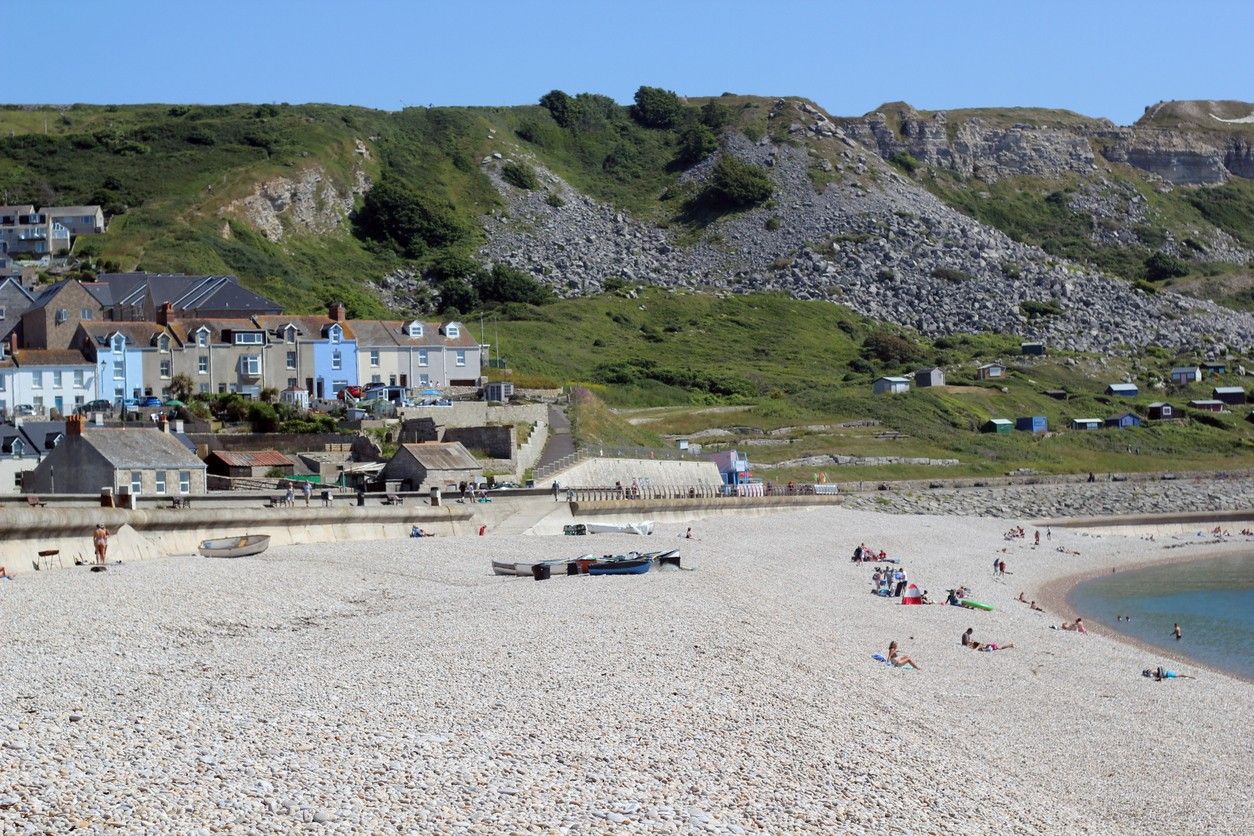Chesil Beach
Chesil Beach is a natural wonder, Nestled along the Jurassic Coast of Dorset, England, that has long captivated the hearts and minds of visitors and locals alike. This extraordinary 18-mile-long shingle beach, with its unique geological features and captivating history, offers a wealth of opportunities for exploration, recreation, and relaxation. Whether you're planning a Chesil Beach holiday, seeking a Chesil Beach caravan park for your next adventure, or simply interested in learning more about this remarkable coastal landmark, this comprehensive overview will provide you with all the information you need to make the most of your Chesil Beach experience. From the beach's remarkable geological wonders and diverse flora and fauna to the delights of the surrounding region and the luxurious accommodations available, this exploration of Chesil Beach will invite you to discover the true essence of this captivating coastal destination.
Chesil Beach at a Glance:
Dog-friendly — Yes, dogs are permitted on Chesil Beach, but it's advised to keep them on a leash due to strong currents and potential hazards.
Best time to visit — Spring and autumn offer milder temperatures and fewer crowds, while summer can be popular for beach activities despite potentially stronger winds.
Family-friendly — While the beach offers picturesque views, its steep shingle slope and strong currents make it less suitable for families with small children or inexperienced swimmers.
Surfing conditions — Chesil Beach is known for its strong currents and powerful waves, making it a popular spot for experienced surfers. However, it's not recommended for beginners.
Facilities — Limited facilities are available directly on the beach, so visitors should come prepared with necessities. Nearby towns like Weymouth offer amenities such as cafes, restaurants, and parking areas for visitors.
The Geological Wonder of Chesil Beach
At the heart of the Chesil Beach experience lies the beach's remarkable geological features, which have been shaped by the powerful forces of nature over thousands of years. From the unique grading of the pebbles to the impressive scale of the entire beach, this coastal landmark is a testament to the incredible dynamism and resilience of the natural world.
The Unique Grading of Pebbles
One of the most striking and distinctive features of Chesil Beach is the unique grading of the pebbles that make up its surface. This remarkable phenomenon is the result of millions of years of natural sculpting by the powerful forces of the English Channel. As the waves crash against the beach, they have sorted the pebbles over time, with the smaller stones being transported further along the coastline, while the larger, heavier stones remain at the western end of the beach. This grading of the pebbles, which ranges from small stones at the eastern end to boulders the size of basketballs at the western extremity, is a testament to the incredible power and persistence of the waves. The process is known as "longshore drift," and it has been shaping the beach for centuries, creating a truly one-of-a-kind geological feature that has captivated visitors and scientists alike. The graded pebbles not only contribute to the beach's distinctive appearance but also play a vital role in its ecology and natural defences. The larger stones at the western end help to dissipate the force of the waves, while the smaller pebbles in the east provide a more gradual transition between the land and the sea. This unique arrangement helps to protect the nearby cliffs and coastal areas from erosion, making Chesil Beach an essential natural barrier against the relentless onslaught of the ocean.
The Impressive Scale of Chesil Beach
In addition to its remarkable grading, the sheer scale of Chesil Beach is truly awe-inspiring. Stretching for an impressive 18 miles (29 kilometres) along the Dorset coastline, this vast shingle barrier is one of the longest of its kind in the world. The beach's height, which can reach up to 15 meters (50 feet) in some areas, is equally remarkable, creating a formidable obstacle against the powerful waves of the English Channel. The scale of Chesil Beach is not just a product of its length and height, but also its depth. The beach is composed of millions of pebbles and stones that extend deep into the ground, creating a substantial and resilient structure that has withstood the test of time. This depth, combined with the beach's steep gradient, helps to dissipate the energy of the waves, making Chesil Beach an essential natural defence against coastal erosion. The impressive scale of the beach is not only a testament to the remarkable power of nature but also a reflection of the area's rich geological history. The formation of Chesil Beach can be traced back thousands of years, with the pebbles and stones having been transported and sorted by the movements of glaciers, rivers, and ocean currents over countless millennia. This long and complex history has resulted in the creation of a truly unique and awe-inspiring coastal feature that continues to captivate and inspire all who encounter it.
The Unique Geological Features
Beyond the remarkable grading and scale of Chesil Beach, the beach is also renowned for its unique geological features, which have long been the subject of fascination and study. One of the most notable of these features is the beach's status as a "tombolo," a landform that connects an island to the mainland. In the case of Chesil Beach, the "island" in question is the Isle of Portland, a prominent limestone promontory that juts out into the English Channel. The connection between the beach and the island, formed over thousands of years by the same processes that have shaped the beach itself, has played a crucial role in the cultural and economic history of the region.
The tombolo formation has facilitated the movement of people and resources between the mainland and the island, enabling the development of thriving communities and industries on both sides of the connection. This has contributed to the rich tapestry of human history that is so deeply woven into the fabric of Chesil Beach and the surrounding landscape. Alongside the tombolo, Chesil Beach is also renowned for its unique geological structures, including a series of ridges and depressions that run parallel to the shoreline. These features, known as "beach cusps," are the result of complex interactions between the waves, the beach's gradient, and the distribution of the pebbles. The beach cusps not only contribute to the beach's distinctive appearance but also play a vital role in its ecology, providing sheltered habitats for a range of plant and animal species.
Exploring the Diverse Flora and Fauna of Chesil Beach
Beyond its striking geological wonders, Chesil Beach is also home to a diverse array of plant and animal life, making it a true haven for nature enthusiasts and wildlife lovers. From the rare and endangered Chesil Beach mouse to the vibrant coastal wildflowers, the beach and its surrounding habitats offer a wealth of opportunities for exploration and discovery.
The Chesil Beach Mouse
One of the most remarkable and iconic residents of Chesil Beach is the Chesil Beach mouse, a unique subspecies of the common house mouse that has adapted to the challenging conditions of the shingle beach. These tiny creatures, which can be found burrowing into the pebbles and nesting in the beach's many crevices, are a testament to the incredible resilience and adaptability of life in this harsh coastal environment. The Chesil Beach mouse is a true marvel of evolution, having developed a range of specialised adaptations that allow it to thrive in the constantly shifting and exposed conditions of the beach. These adaptations include a thicker, more water-resistant coat, larger hind legs for navigating uneven terrain, and a heightened sense of smell and hearing to detect predators and locate food sources. Despite their diminutive size, the Chesil Beach mouse plays a vital role in the beach's delicate ecosystem, serving as both a prey species and a key disperser of seeds and other plant materials. The presence of these unique rodents is a testament to the incredible biodiversity that can be found within the seemingly inhospitable environment of Chesil Beach. Sadly, the Chesil Beach mouse is classified as an endangered species, with its population under threat from a range of factors, including habitat loss, predation, and the impacts of climate change. Conservation efforts to protect this remarkable creature and its fragile coastal home are of paramount importance, ensuring that future generations can marvel at the wonders of this extraordinary natural wonder.
The Diverse Bird Species
The beach is also home to a variety of bird species, including the iconic Ringed Plover, which can be seen scurrying along the shoreline in search of food. Other birds that frequent Chesil Beach include the Oystercatcher, the Turnstone, and the Dunlin, all of which are adapted to the coastal environment.
Discovering the Delights of Chesil Beach and its Surroundings
With its stunning natural beauty, rich history, and diverse range of activities and attractions, Chesil Beach is a truly captivating destination for visitors of all interests and ages. Whether you're seeking a peaceful Chesil Beach holiday, a thrilling adventure at a Chesil Beach caravan park, or simply a day of exploration and discovery, there is something for everyone to enjoy.
Exploring the Beach on Foot
One of the most rewarding ways to experience the beauty and wonder of Chesil Beach is through a stroll along the shingle, taking in the sights, sounds, and sensations of this captivating coastal landscape. Whether you choose to explore the entire 18-mile stretch of the beach or focus on a particular section that piques your interest, a walking tour of Chesil Beach is an experience that is sure to linger long in the memory. Along the way, you'll have the opportunity to observe the diverse array of plant and animal life that call Chesil Beach home. Keep an eye out for the iconic Ringed Plover, darting along the shoreline, or the elusive Peregrine Falcon soaring high above the cliffs. You might even spot the rare and endangered Chesil Beach mouse, burrowing into the shingle and scurrying between the pebbles. The experience of walking along Chesil Beach is not just about the sights and sounds, but also the physical sensations.
Fossil Hunting at Chesil Beach
For those with a keen interest in the geological and paleontological history of the region, Chesil Beach offers a truly exceptional opportunity to engage in the fascinating pursuit of fossil hunting. The beach and its surrounding cliffs are home to a wealth of fossilised remains, providing a window into the area's ancient past and the evolution of life on Earth. The diversity of the fossils found at Chesil Beach is truly remarkable, reflecting the rich and varied history of the Jurassic Coast, of which the beach is a part. One of the most exciting aspects of fossil hunting at Chesil Beach is the element of discovery and surprise. With each turn of a pebble or inspection of a rocky outcrop, you never know what hidden treasures may be revealed. The thrill of uncovering a previously undiscovered fossil or a rare and exceptional specimen is an experience that can captivate and inspire even the most seasoned fossil enthusiasts. Beyond the sheer joy of the hunt, fossil hunting at Chesil Beach also offers an invaluable opportunity to learn about the region's geological and paleontological history. By carefully examining and studying the fossils you uncover, you can gain insights into the ancient environments and ecosystems that once thrived in this now-iconic coastal landscape. Whether you're a seasoned fossil hunter or a curious beginner, Chesil Beach is a prime destination for this fascinating and rewarding activity. With proper guidance, safety precautions, and a keen eye for detail, you can embark on a journey of discovery that will deepen your understanding and appreciation of the natural world and its incredible history.
The Luxury Accommodation at Chesil Beach Lodge
The Chesil Beach Lodge offers a unique and unforgettable opportunity. This exclusive accommodation option, nestled just steps from the shingle beach, provides visitors with a chance to fully immerse themselves in the natural beauty and tranquillity of this captivating coastal destination. The Chesil Beach Lodge offers a range of high-end accommodation options, from cosy and elegantly appointed suites to spacious and modern apartments. Each unit is designed to seamlessly blend with the surrounding natural environment, offering stunning views of the beach and the rolling waves of the English Channel.
One of the standout features of the Chesil Beach Lodge is its commitment to sustainability and eco-friendly practices. The lodge has been constructed using local and sustainable materials, and it incorporates a range of energy-efficient technologies to minimize its environmental impact. This dedication to sustainability, combined with the lodge's stunning natural setting, makes it a truly unique and memorable destination for those seeking a Chesil Beach experience that is both luxurious and environmentally responsible.
In addition to the exceptional accommodation, the Chesil Beach Lodge also offers a range of on-site amenities and activities to enhance the visitor experience. Guests can enjoy the lodge's private beach access, explore the surrounding coastal paths and nature reserves, or simply relax and unwind in the lodge's tranquil setting. For those looking to make the most of their Chesil Beach getaway, the Chesil Beach Lodge is an ideal choice, offering a level of comfort, luxury, and environmental stewardship that is truly unparalleled in the region.
Exploring the Nearby Market Town of Bridport
While Chesil Beach is undoubtedly the main draw for many visitors to this corner of Dorset, the nearby market town of Bridport is also well worth a visit, offering a wealth of cultural, culinary, and recreational opportunities that complement the natural splendour of the surrounding coastline.
The Historic Charm of Bridport
While Chesil Beach is undoubtedly the main draw for many visitors to this corner of Dorset, the nearby market town of Bridport is also well worth a visit, offering a wealth of cultural, culinary, and recreational opportunities that complement the natural splendour of the surrounding coastline. Bridport's origins can be traced back to the 10th century, and the town's rich history is evident in its well-preserved architecture and the array of historic landmarks that dot the landscape. From the imposing Bridport Town Hall, with its distinctive clock tower and neoclassical facade, to the picturesque St. Mary's Church, with its soaring Gothic spire, the town's historic buildings provide a fascinating glimpse into the area's past and the people who have called it home over the centuries. Bridport has a vibrant weekly market, which has been a fixture in the town since the 13th century. The Bridport Market, held on Wednesdays and Saturdays, is a bustling hub of activity, offering a diverse range of locally sourced produce, artisanal crafts, and an array of delicious street food. Wandering through the market's stalls is a wonderful way to immerse yourself in the local culture and connect with the community that has long been at the heart of this Chesil Beach-adjacent town.
The Bridport Market
The Bridport Market is a true testament to the enduring vitality and community spirit of this historic Dorset town. For centuries, the market has served as a central gathering place for locals and visitors alike, offering a diverse array of goods and a lively, convivial atmosphere that is unique to this corner of the Jurassic Coast. Beyond the market's impressive selection of goods, the true heart of the Bridport Market lies in the connections and conversations that take place between the vendors and the customers. As you browse the stalls, you'll have the opportunity to engage with the local producers, artisans, and food purveyors, learning about the stories and traditions that have shaped the region's rich culinary and cultural landscape. The Bridport Market also hosts a range of special events and celebrations throughout the year, from seasonal food and craft fairs to live music performances and cultural festivals. These events not only showcase the town's vibrant creativity and diversity but also provide an opportunity for visitors to truly become a part of the Bridport community, experiencing the town's rich heritage and traditions firsthand.
Fishing on Chesil Beach
For anglers and fishing enthusiasts, Chesil Beach is a true mecca, offering a diverse and abundant range of marine life and a unique and challenging fishing experience. The beach's prime location along the English Channel, combined with its varied terrain and strategic positioning, make it a prime destination for those seeking to cast their lines and reel in a bountiful catch. Chesil Beach is renowned for its diverse array of fish species, including bass, mackerel, and the iconic Weymouth Pollock, which are drawn to the beach's rocky outcrops and strong tidal currents. Anglers can enjoy a wide range of fishing techniques, from surfcasting and rock fishing to more specialised methods like kayak fishing and beach casting. One of the standout features of fishing on Chesil Beach is the beach's unique geological structure, which creates a diverse array of micro-habitats and ideal feeding grounds for a wide range of marine life. The graded pebbles, rocky outcrops, and deep-water channels provide a rich and ever-changing environment for anglers to explore, with the potential for large and varied catches. For those new to fishing on Chesil Beach, it's important to familiarize yourself with the local regulations and best practices to ensure a safe and sustainable experience. This includes understanding the tide times for Chesil Beach, which can have a significant impact on the availability and behaviour of the fish, as well as being aware of any seasonal restrictions or conservation measures in place. In addition to the fishing itself, Chesil Beach also offers a range of amenities and facilities to support the needs of visiting anglers. The nearby towns and villages, such as Bridport and West Bay, offer a variety of tackle shops, bait and tackle suppliers, and even Chesil Beach caravan parks and Chesil Beach holiday parks that cater specifically to the needs of fishing enthusiasts.
Practical Information for Visiting Chesil Beach
Tide Times and Weather Considerations — To make the most of your visit to Chesil Beach, it's important to be aware of the practical information and considerations that can help ensure a smooth and enjoyable experience. One of the most important factors to consider when visiting Chesil Beach is the tide. The beach is subject to significant tidal changes, with the high tide often reaching the base of the shingle bank. Checking the Chesil Beach tide times before your visit can help you plan your activities and ensure your safety. Additionally, keeping an eye on the Chesil Beach weather forecast can help you prepare for any changing conditions and ensure you have the appropriate clothing and equipment for your visit.
Accessibility and Parking — Chesil Beach is accessible from many points along its 18-mile stretch, with various car parks and access points available. It's important to note that some areas of the beach may have limited accessibility, particularly for those with mobility challenges. Researching the specific access points and parking options in advance can help ensure a smooth and enjoyable visit.
Amenities and Facilities — While Chesil Beach itself is a natural, relatively undeveloped area, the surrounding towns and villages offer a range of amenities and facilities to cater to visitors. From local shops and cafes to Chesil Beach holiday parks and Chesil Beach caravan parks, there are plenty of options for accommodation, dining, and other services to support your visit.
Safety and Responsible Enjoyment — As with any coastal environment, it's important to exercise caution and prioritise safety when visiting Chesil Beach. Respecting the natural environment, following any posted warnings or guidance, and avoiding risky behaviours can help ensure a safe and enjoyable experience for all.
Related articles

Let us know you agree to cookies
We use marketing, analytical and functional cookies as well as similar technologies to give you the best experience. Third parties, including social media platforms, often place tracking cookies on our site to show you personalised adverts outside of our website.
We store your cookie preferences for two years and you can edit your preferences via ‘manage cookies’ or through the cookie policy at the bottom of every page. For more information, please see our cookie policy.
